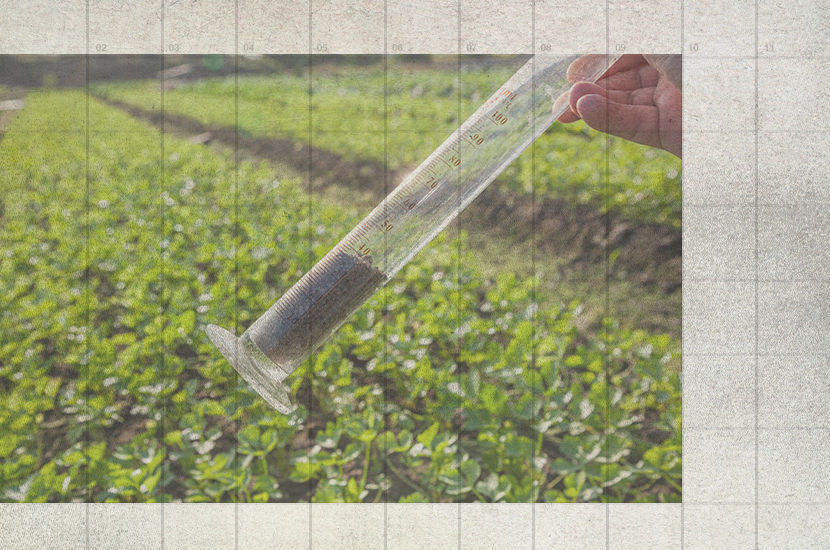4 MIN READ
Five Considerations for Soil Fertility Planning
January 30, 2021

Soil fertility planning is arguably the most important thing you can do early in the year to help the success of your farm come harvest. But soil fertility planning is not a flat one-size-fits-all program. Every farm is different, and every farmer does things differently. As you prepare for your 2022 season, keep the following things in mind when making your soil fertility plan.
1. Last season’s nutrient deficiency
Your crops from last season hold clues to help you be successful in the future, and knowing if they suffered from nutrient deficiency last season is a great first step in making your fertility plan.
In soybeans, you may have noticed yellowing between the veins of the newest leaves and reduced nodulation. Seedling soybean plants may also show stunting, smaller leaves, interveinal reddening or purpling on lower leaves. Corn often shows deficiencies through yellow, brown, purplish, striped or desiccated leaves.
2. Soil testing
Collecting a soil sample gives you a snapshot of what your field looks like so you can tailor your plan in the offseason. Soil sampling data can help you make variable rate applications and get field fertility levels where they need to be before you ever get your seeds in the ground.
And if you’re working with an expert like a Channel Seedsman, that data helps them make a better recommendation, which can ultimately lead to better results.
3. Know your nutrients
Nutrients are needed to sustain biological functions and help protect the plant from disease and other stressors.
Soybean plants require 16 elements for growth and seed development including nitrogen, phosphorus and potassium.
Corn relies on micronutrients and macronutrients like nitrogen, phosphorus and potassium to grow.
Knowing the relative amount of each nutrient by crop and the amounts removed with harvest is useful for calculating the amount of fertility that will need to be added to the soil to maintain optimum harvest levels.
4. Evaluate your inputs

Every year, farmers evaluate which inputs they may want to use to help increase yield and return on investment.
To help soybean farmers with this decision, Channel tested different inputs such as seeding rate, planting date, fungicide use and fertilizer applications and evaluated them for their potential impact on soybean yield. See the complete study results.
For a corn farmer, nitrogen is one of the most important — and most expensive — inputs they have to manage. Studies have shown that inputs such as optimal nitrogen rate, side-dress timing and nitrogen side-dress placement all have an impact on the final yield.
5. Talk to the experts
Understanding how that cropping system works and when it's important to have those nutrient levels where they need to be at the specific time would pay off in dividends. It pays off to have a Channel Seedsman and a Channel agronomist working with you because you can build a fertility program together.
References:
https://www.channel.com/en-us/agronomy/soybean-fertility-during-planning-season.html
https://www.channel.com/en-us/agronomy/symptoms-of-corn-nutrient-deficiency.html
https://www.channel.com/en-us/agronomy/soybean-fertility-during-planning-season.html
https://www.channel.com/en-us/agronomy/corn-nutrition-101.html
At Channel®, we’re committed to helping our farmers maximize performance and profitability through our research and studies. By providing insights and advice, we’re able to help our customers make the most out of our elite seed products.
